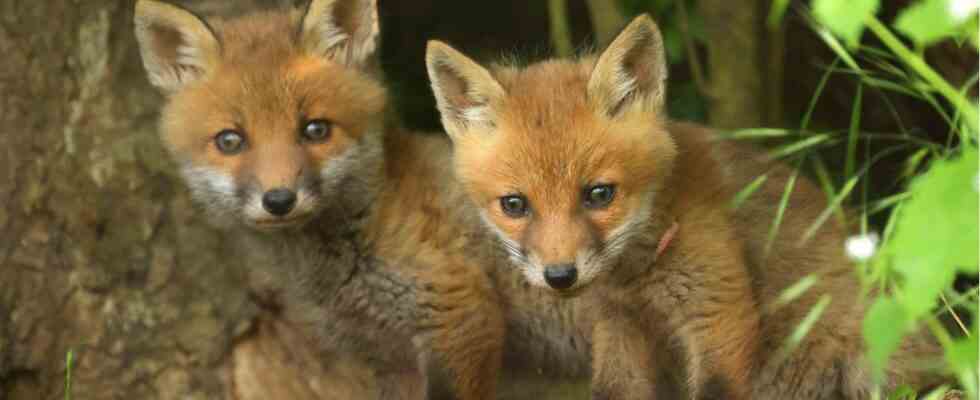If you go for a walk around Valentine’s Day and hear something like a dog barking – but don’t see a dog, you may be witnessing a love story with foxes. Normally, foxes tend to be out and about at dusk or at night. Now that they are looking for a partner, you can also meet the animals during the day. “In the forest, at the edge of a field or even in the park, with luck, the hoarse barking of a fox ready to mate can be heard in February,” says Jenifer Calvi from the German Wildlife Foundation.
Common toads, on the other hand, don’t bother with gestures – the males literally lie in wait for the females. If one jumps into their path, he jumps onto its back and holds on there with a clamp grip. The toad can no longer be shaken off until both have reached their goal together. As a kind of package, the two migrate to the spawning waters, where she lays her eggs, which he then fertilizes. Among amphibians, this is considered pure romance.
Valentine’s Day with the Toads: She drags him around
While with the toads she has to carry him around so that tadpole offspring can ultimately appear, the rabbit female is up to date when it comes to emancipation. Because there are boxing matches with potential partners or sometimes a chase. The rabbit with the most power is then chosen by the female. Or several rabbits with a lot of power. The females can have offspring from several males at the same time.
Mallards, on the other hand, appreciate particularly long honeymoons. They’ve been engaged since October. The ducks often chase each other over ponds and lakes, the waterfowl in love communicate with a special facial expression and gesture. Courtship comes to an end around Valentine’s Day. After all, the first chicks should hatch in April.
source: press release the German Wildlife Foundation

